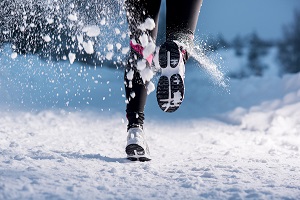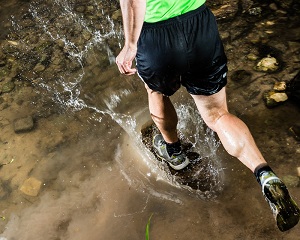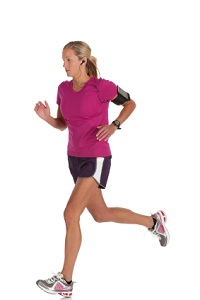
Key points that a good marathon training program should include.
Training Level
Before you even start training you should have a fairly good idea of your marathon goal as it relates to your running ability and experience. Don’t be too ambitious at the beginning if you haven’t run a marathon before. Sometimes just finishing the race comfortably is a good enough goal. Pick a training level you can handle from a weekly mileage perspective. You will run a lot of miles during the weeks of training. The program you follow will need to be tailored to your own marathon goal. One size does not fit all.
Vary Your Runs
Try to vary your running pace from run to run. In fact most training programs will indicate what type of fun you should do each day. For example, easy pace, hill run and marathon pace.
Alternate Your Training Days
The problem with training for a marathon is that your body does not have enough time to recover from the increasing effort as you get further into the schedule. To counter this a good training program will follow the hard day – easy day principle as much as possible. This means you will alternate lighter training days with the harder ones. For example: Day 1 – 7 miles at tempo pace. Day 2 – 7 miles at an easy pace. Day 3 – 9 miles at your intended marathon pace. Day 4 – 7 miles at your intended marathon pace. Day 5 – rest. Day 6 – 17 mile long run. Day 7 – 5 miles at an easy pace.
Diet
A good program should also include dietary advice. Many marathoners believe that eating lots of carbohydrates is all they need for training. This actually is not true. Yes, lots of carbs will fuel your running, but you need proper amounts of protein as well to help repair muscle tissue that is broken down, especially during the longer runs. You also need adequate amounts of fat, but unsaturated as much as possible.
Mental Preparation
It takes a lot of mental fortitude to get out of the door day after day (especially in poor weather conditions) and go for your required training run. Some things to help are training with a friend or a group with similar goals, taking a couple of days off if you feel down, keeping a positive attitude, and visualizing reaching your goal.
Cross-training
It’s not all about running. It’s about other activities that will help you build endurance and stamina. It will help you also avoid injury.
Without a proper training schedule and without commitment, you will have difficulty reaching your goal. Keep strict to your schedule. When marathon day comes, you’ll be thankful you did when you successfully cross that finish line.
For more articles go to http://lifesportfitness.lifestyleezine.com

 Many dedicated runners will brave the cold, damp air and dark, slick streets as winter sets in. Running is actually part of surviving the winter for some. Winter running can be a challenging and, at times, difficult experience outdoors. For those of you who don’t let a little snow or sleet deter a run, it is important to stay safe and comfortable during winter running. Here are tips to keep your winter running more safe and comfortable:
Many dedicated runners will brave the cold, damp air and dark, slick streets as winter sets in. Running is actually part of surviving the winter for some. Winter running can be a challenging and, at times, difficult experience outdoors. For those of you who don’t let a little snow or sleet deter a run, it is important to stay safe and comfortable during winter running. Here are tips to keep your winter running more safe and comfortable: Bay Area mud runs have exploded in popularity over the past few years. You may even be thinking of signing up for a mud run if you can run up to 12 miles, which is the distance of most mud run. But beware of the obstacles that are going to present themselves throughout the run. This is what you want to be training for.
Bay Area mud runs have exploded in popularity over the past few years. You may even be thinking of signing up for a mud run if you can run up to 12 miles, which is the distance of most mud run. But beware of the obstacles that are going to present themselves throughout the run. This is what you want to be training for. Once you start running it becomes almost like an addiction. This is one of the few sports in which you will be able to compete against yourself. People always try to beat their
Once you start running it becomes almost like an addiction. This is one of the few sports in which you will be able to compete against yourself. People always try to beat their